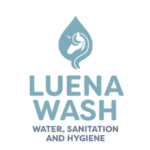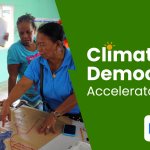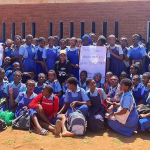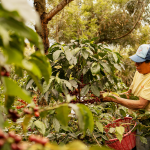Source of Pictures: https://www.borgenmagazine.com/social-forestry-in-indonesia-tackles-poverty/
Updated and Refined by Happy Tarumadevyanto – happy.devyanto@environmental.asia
Almost all small farmers in Indonesia, even those producing flagship commodities, face structural challenges that make them unconfident in their own businesses and make it difficult for them to be directly recognized (branded) by regional or national markets.
The problem does not lie in the quantity of products (Indonesia is a major producer), but in the quality of institutions and the efficiency of the supply chain.
Here is an explanation of why small farmers in Indonesia are not yet generally confident in their business and cannot go-to-market independently:
📉 Reasons for the Gap between Small Farmers and the Regional Market
1. Dominance of Middlemen and Long Supply Chains
- Farmers Disconnected from Market Information: Small farmers generally only know the price at the level of the middleman or village collector. They lack direct access to price information and demand from regional markets or large factories.
- Capital Dependence: Farmers are often tied to debt or sales agreements with middlemen (traders) from the planting season (for capital and fertilizer). This forces their products to be sold compulsorily at a price predetermined at the start, not the prevailing market price at harvest.
- Inefficient Supply Chain: The long marketing channel (farmer → village collector → regional collector → distributor → retail/factory) results in high-profit margins being enjoyed by intermediaries, while the share received by the farmer remains very small.
2. Issues of Quality, Quantity, and Branding
- Low Quality and Standardization: Products from small farmers are often inconsistent due to differences in seeds, cultivation methods, and post-harvest handling. Modern market quality standards (such as those for supermarkets, export, or industry) are difficult for individual farmers to meet.
- Low Economy of Scale: Farmers generally have small landholdings (0.5−1 Ha). They cannot provide large quantities consistently (supply consistency), which is a mandatory requirement for large buyers (offtakers) or exporters.
- Lack of Brand Awareness: Their products are sold as raw bulk commodities without brand identity. To be “directly recognized,” significant investment is needed in branding, packaging, and certification (e.g., organic, Fair Trade, or SVLK), which is far beyond the financial reach of individual farmers.
3. Weak Institutional Structures and Internal Capacity
- Weak Farmer Organizations: Although there are many farmer groups or cooperatives, many do not function effectively as business entities (e.g., lack of management transparency, internal conflict, or lack of a strong legal entity).
- Minimal Business Soft Skills: As seen in the PS groups, farmers lack expertise in risk management, price negotiation, and digital literacy for leveraging e-commerce or online marketplaces.
- Difficulty Accessing Formal Financing: Formal financial institutions (banks) are reluctant to grant loans because farmers are deemed risky, lack adequate collateral, and have difficulties verifying their credit history.
4. Policy and Infrastructure
- Inadequate Logistics Infrastructure: Constraints such as damaged roads, lack of cold storage facilities, and high transportation costs, especially outside Java, increase operational costs and lead to large post-harvest losses.
- Commodity Policy Focus: The government often focuses on production targets for commodities (e.g., rice, corn) in terms of quantity, rather than on value creation and strengthening the bargaining position of farmers in the value chain.
💡 The Role of the Market and Partnership Solutions
This issue brings us back to your question: Are our expectations too high?
The answer is yes, if we expect individual farmers to compete directly in a global market dominated by large corporations.
The Solution lies in Institutions and Partnerships:
- Strengthening Cooperative-Based Offtakers: Encouraging cooperatives or Village-Owned Enterprises (BUMDes) to act as professional offtakers. This cuts out inefficient intermediaries, guarantees volume, and increases the farmers’ bargaining power.
- Contract Farming Model: Farmers collaborate with companies/industries (e.g., ID Food or factories) through clear contracts that cover agreed-upon quality standards, quantity, and purchase prices. This provides business certainty (confidence) for the farmers.
- Supply Chain Digitalization: Utilizing technology to connect farmers directly with large retail markets or end consumers, while simultaneously providing transparent access to price information.
In essence, confidence and brand recognition can only be achieved if small-scale farmers transform from individual producers into a collective business entity supported by a robust system of logistics, financing, and quality management.











